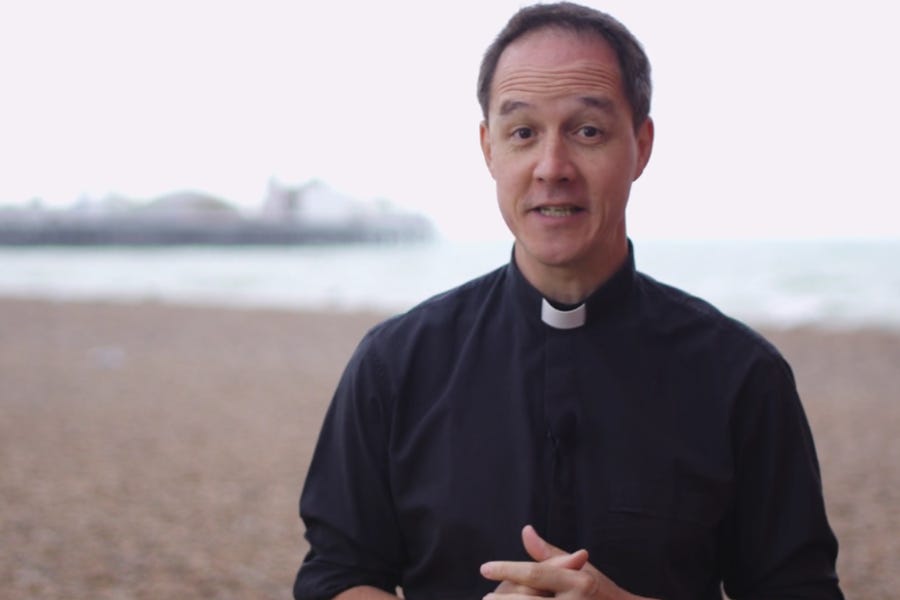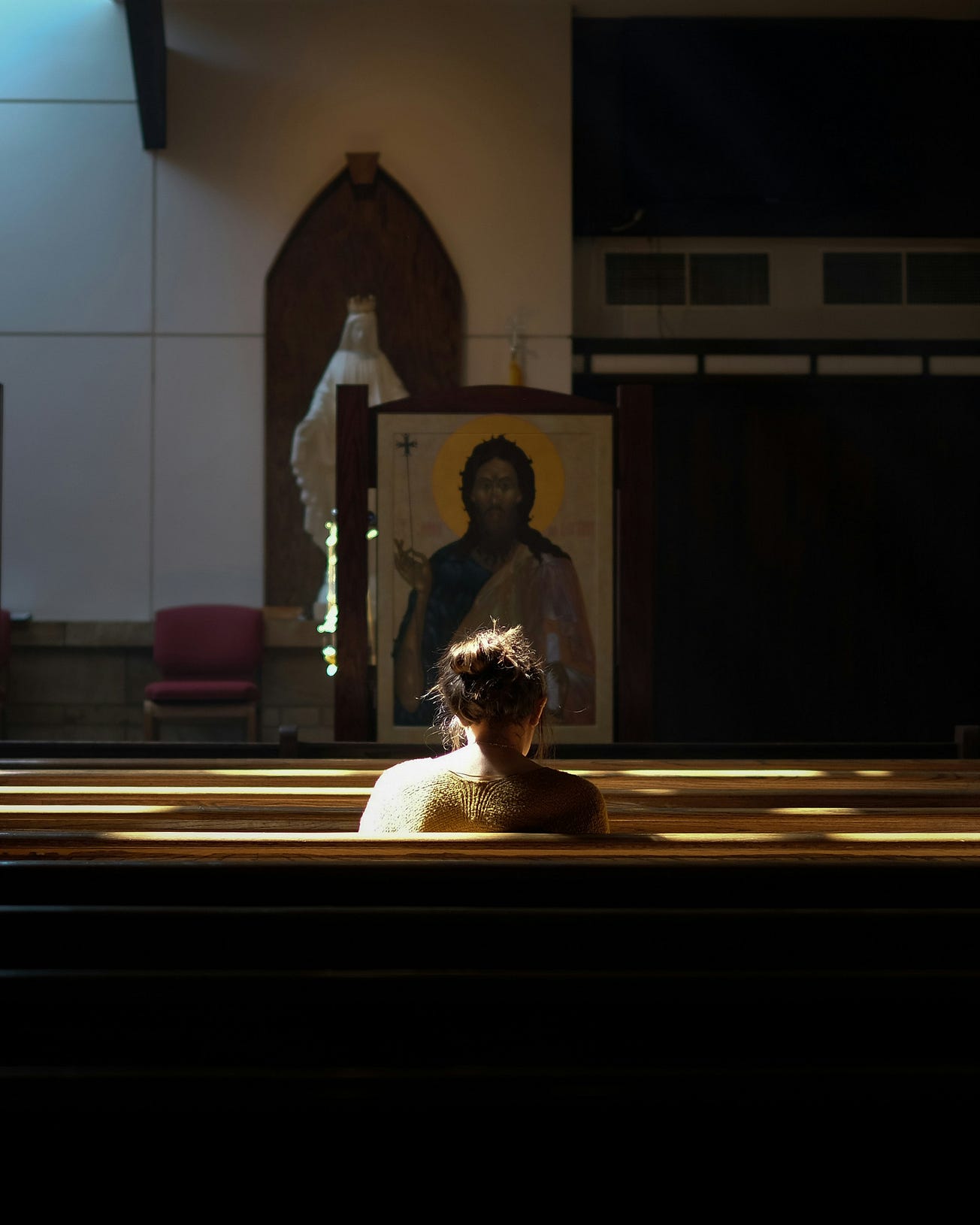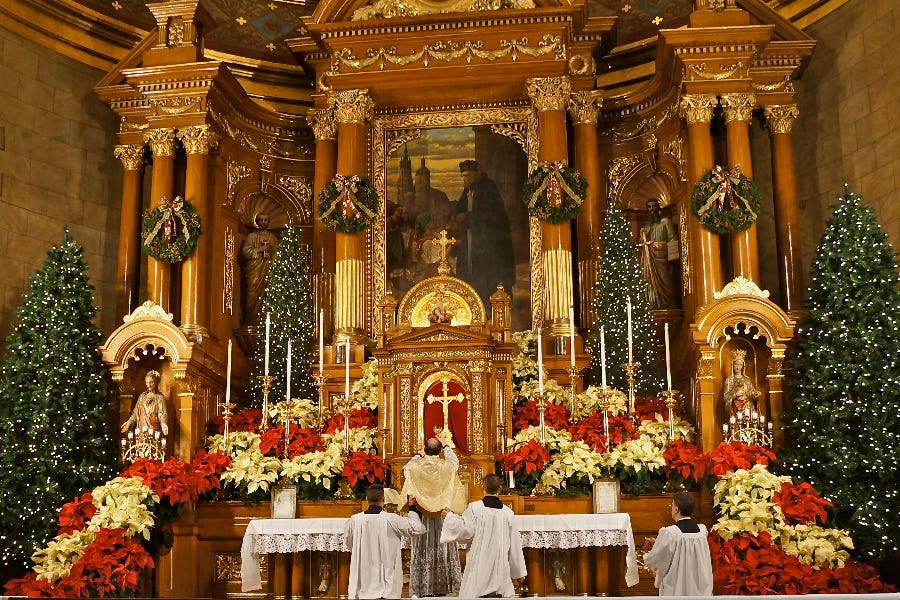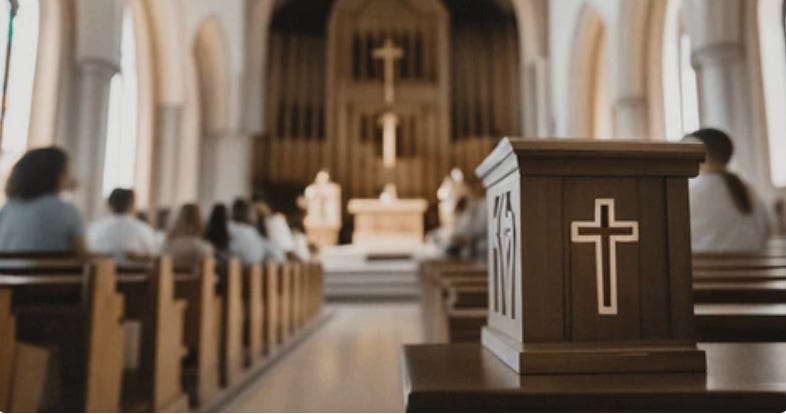There are 1.3 billion Catholics worldwide — and each one took a different route to the baptismal font. Even cradle Catholics have a backstory: ancestors who, often deep in the mists of history, embraced the faith and passed on the gift to generations.
For Fr. Stephen Wang, rector of the Venerable English College in Rome, the story begins with his grandparents, who lived in Guangdong, southern China, before they emigrated to the U.K. in the 1930s. Unusually for Chinese immigrants to Britain at that time, they were Christians.
They settled first in Liverpool, then Sheffield, connecting with local Christian communities and raising their son — Fr. Wang’s father — in the Anglican faith.
Fr. Wang’s grandparents on his mother’s side were Scottish and English, which is why he describes himself as “half Chinese, a quarter English, and a quarter Scottish.”
“So my dad grew up as a Chinese Anglican, and my mum grew up Anglican,” he said in a phone interview with The Pillar. “Long story short, they both became Catholic at different times.”
“My full name is Stephen Wei-Jon Wang. I’ve got an English first name, a Chinese middle name, and a Chinese surname. I grew up with this wonderful mixture of Chinese and British heritage. That’s very much a part of my life, my identity, and my consciousness today.”
Since 2021, Fr. Wang has served as the rector of the Venerable English College in Rome. In addition to overseeing the historic seminary, he is coordinator of the Sycamore program, an informal course helping seekers to discover more about the Christian faith.
The program took shape in the 2010s at Newman House, a chaplaincy for London’s university students. Fr. Wang, a chaplain at the time, worked with a group of young people on a course introducing Christianity to people with little or no experience of it.
The Sycamore program is now used around the world. Its resources have been translated into more than a dozen languages, including French, Spanish, Vietnamese, and even Faroese (a Nordic language spoken by fewer than 100,000 people.)
In 2021, Fr. Wang published the book “Sycamore: The Catholic Faith Explained,” an accessible guide to Catholic beliefs and practices.
Fr. Wang spoke with The Pillar about how the Sycamore program came into being, how it was painstakingly refined, and how it is leading participants into the Catholic Church.
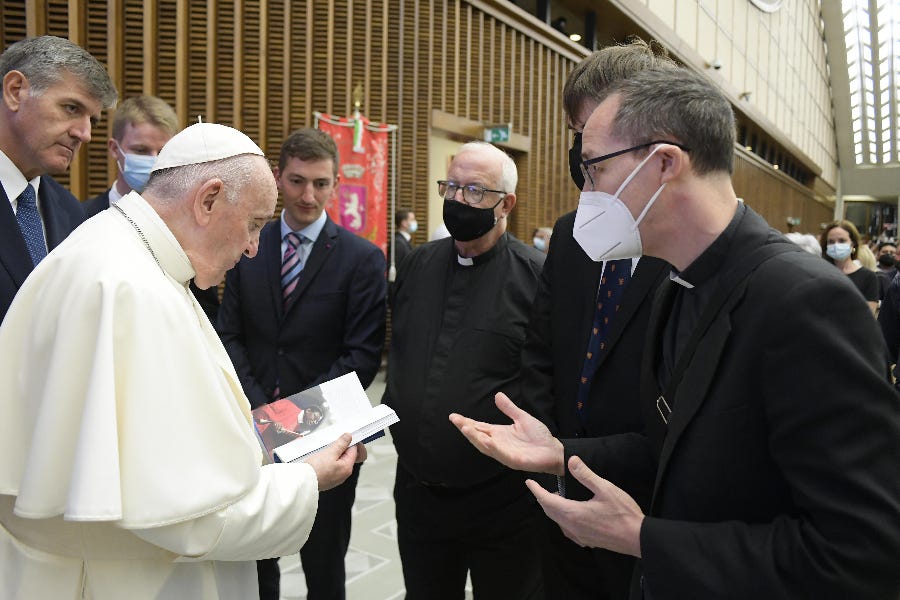
Are you the originator of the Sycamore program or did a group of people create it?
Right from the beginning there’s been a fantastic team working on the Sycamore program together. I guess that I’ve been the main coordinator and writer. When I was a university chaplain, there was a team of young people — students and myself — who really wanted to think about evangelization and outreach for the wider student community, and especially to connect with people who didn’t have faith and wanted to explore the Christian faith, or maybe had some very minimal connection. So it was a project of trying to reach out to people through this student evangelization team.
The idea was then to create a program that would allow people to get to know the Christian faith well, to create a community where people could feel really welcome, and free to talk and share their honest questions.
Why is it called Sycamore?
It refers to the story of Zacchaeus in the Gospel of St. Luke. Jesus is coming into Jericho. Zacchaeus is curious to see Jesus, but he’s too short to see Jesus above the crowd. What he does is he climbs the sycamore tree in order to get a view of Jesus, and as Jesus is passing by, he spots him in the tree and says to Zacchaeus: “Come down. I must come to your house.” Zacchaeus comes down and Jesus goes to his house. Zacchaeus’ life is completely changed and he follows the Lord. He’s converted through that encounter with Jesus.
The sycamore tree that Zacchaeus climbs is something that helps him to meet Jesus. It is not an end in itself; it is a means to an end. So the whole point of the Sycamore program — the book, the groups that are run all over the world, everything that we do in Sycamore — is to help people to meet the Lord and to meet his Church. It’s not an end in itself. It’s not a movement that you join. What you’re attracted to, hopefully, is the Church and Jesus Christ. Sycamore is just a way of helping that encounter to take place more easily.
Have you seen lives changed as a result of the program?
I’d say that I’ve seen lives change as a result of people meeting the Lord and meeting the love of Christians in the Church. That’s the thing that’s changed lives, and I’ve seen that happen partly through the Sycamore groups, in big ways and small ways.
When we began running it as a university chaplaincy, it was so nice to see students bringing their friends, often atheists, Hindus, Muslims, Buddhists, agnostics… It was lovely to see the students bringing their friends and seeing them arrive a little bit nervous and unsure about what was going to happen, but gradually through the evening, seeing them relax and feel welcomed, that they could begin to talk and explore the things that were coming up through the films and the discussions.
At the very simplest of levels, it was about helping people to share and explore faith and grow together. But I’ve seen people take steps of faith through Sycamore. I’ve seen them become more interested in Christianity. I’ve seen them have that desire to come and explore the Mass.
We’ve seen in a lot of places where the Sycamore program begins very informally, for example, with an inquiry group. People just come in very casually for an evening to explore things. Then that’s led into something a bit more formal, like an RCIA course, or a desire to be confirmed if maybe they were Catholics who hadn’t practiced their faith very deeply but were coming back to their faith.
What would your advice be to someone in, say, America who would like to set up a Sycamore group?
We’ve got dozens of groups running in America. The wonderful thing about Sycamore, in my view, is it’s really accessible and adaptable. There are a set of resources — films, discussion questions, and training materials — which are all online. They’re all freely available on the Sycamore website.
So whether you’re in America, Australia, Norway, Poland, Vietnam, or the Philippines, you can find the website. You can see the resources. You can do the training, and everything is available for you to start your own group.
We’ve got a mission development team, and its job is to support communities as they’re beginning to use Sycamore, to help them with the training, and to give advice about how to get the groups going in the best way, and then to help new groups network with other groups in the same area or country.
So very practically, if I get an email from an American parish, I direct them to the website and to the team, who give them the support they need and help them to use the website well, and also, with their permission, to connect them with other parishes in their diocese using the program. They can learn from good practice that way.
Where is Sycamore already established?
We’re in dozens of countries, but we’ve got particularly strong links with English-speaking countries. So with Great Britain, Ireland, America, Canada, Australia, and Singapore.
We’ve got really strong links with a number of countries at the level of the national bishops’ conference, or the diocese, where we’ve provided the Sycamore videos with subtitles, and translated lots of the Sycamore resources into those local languages.
We’re working very strongly with the churches in the Netherlands, Denmark, Norway, Sweden, Latvia, Lithuania, Portugal, and Brazil. We’re also translating and beginning relationships with Poland, Vietnam, the Philippines, and a number of other countries.
How did it spread to so many countries?
Mainly through word of mouth. Someone’s heard about Sycamore. They’ve become excited about it. They’ve realized that it’s filling a niche. There are lots of wonderful resources, but every resource has its own flavor and spin. And there just seems to be a particular niche for the Sycamore program.
We share a lot of elements with other resources. But I think there’s a uniqueness about the combination of different elements in Sycamore, which is that it’s trying to present the Catholic Christian faith in a really accessible way. That’s one of the key things: it’s trying not to use jargon, not to use a language that assumes you already understand Christianity. It’s trying to invite people into the Christian vision of life and the Christian faith.
It’s really key that Sycamore provides discussion questions at each stage of the films so that people are not just left hanging. They’ve got really concrete questions to talk about, so that you can have a free-flowing conversation and discussion.
So it’s the teaching and the catechesis but through a beautiful film that’s freely available online, with all the discussion questions built in and all the training materials. When you put that all together, there’s something we think is quite special there. And it seems that it’s really filling a need in certain communities, parishes, and dioceses.
Did you have the idea for this approach at the beginning or did you discover it by trial and error?
A bit of both. I think right at the beginning, when we had the student evangelization team at the university chaplaincy where I worked, we were really clear that we wanted to do an evangelization course that would reach out to non-Christians, that would use accessible language, and make some beautiful videos, and have some really open, free-flowing conversation. And that was at the heart of it from the beginning.
Of course, we didn’t invent that. There are lots of different programs and courses that are trying to offer some good content with good discussion and community. But we wanted to do that in our own way.
We started off with a goal to do this for university students. But then when we made the first films very quickly and put them online, we found that they were being used not just by university chaplaincies but also in parishes, RCIA courses, prisons…
And what was so interesting was that it wasn’t just appealing to young adults. They seemed to be pitched at a particular level that was accessible and attractive to people of different ages. We found from experience that they seem to work with people of every age, from teenagers to 80 and beyond.
But we also learned to simplify the content. Even though we had the goal of doing something really accessible, mainstream, and uncomplicated, we tried at first to cram too much in. We were using Christian jargon. Over the couple of years that we spent redeveloping the materials in the presentation, we really learned to simplify — not to dumb down, but just to make the language, the stories, and the presentation as accessible as possible.
Was that a painful process?
No, it was a wonderful one. We had got lots of feedback from the initial users about our early films. We had a great team of students, colleagues, and collaborators looking at the text, giving comments. I was the main reviser. I love revising and editing. It was great because I love working with the team. It’s much nicer working with a team than just writing something on your own and sending it out without having had any feedback.
We had great fun trialing lots of different discussion questions. Because you can have what you think is a great question, but then you try it with a group, it falls completely flat. It’s really boring, or no one knows what you’re going on about, what you really are asking.
That was a really challenging process of developing new discussion questions that helped people to have a deep, honest discussion about this topic, whatever it was. Some questions can make people feel stupid: Why don’t I know the answer to this? So you want open-ended questions that don’t make people feel stupid, but that do generate really interesting discussion about a specific topic. They’re not perfect now by any means, because we were still learning that some of them don’t work as well as others.
It was really clear to us that if we were going to do this properly, then we needed to put a lot of time, energy, and resources into making the films as beautiful and professional as we could. In other words, not just to do them on the cheap. We prayed about this a lot. We realized that you can’t just do something quickly and cheaply. You have to do it really well. And that takes a lot of prayer, a lot of planning.
And also it takes a lot of resourcing and fundraising. We were really blessed to get some solid funding from three or four trust funds that really believed in the project and in wanting to do something well, to create some resources that we could be really proud of.
The paradoxical thing is that you want to do something very accessible. And you think that that might be easy to do. But in fact, to make something accessible and attractive, you have to put in enormous amounts of time, energy, and resources.
We found a fantastic production company and we spent a year working on Sycamore with them, rewriting the script, working out the locations, and preparing the interviews. We had some fantastic weeks filming all over the south of England in some of our great churches and pilgrimage centers, and just using the gifts in the history of the Church in England. And out of that came Sycamore as we see it today.

